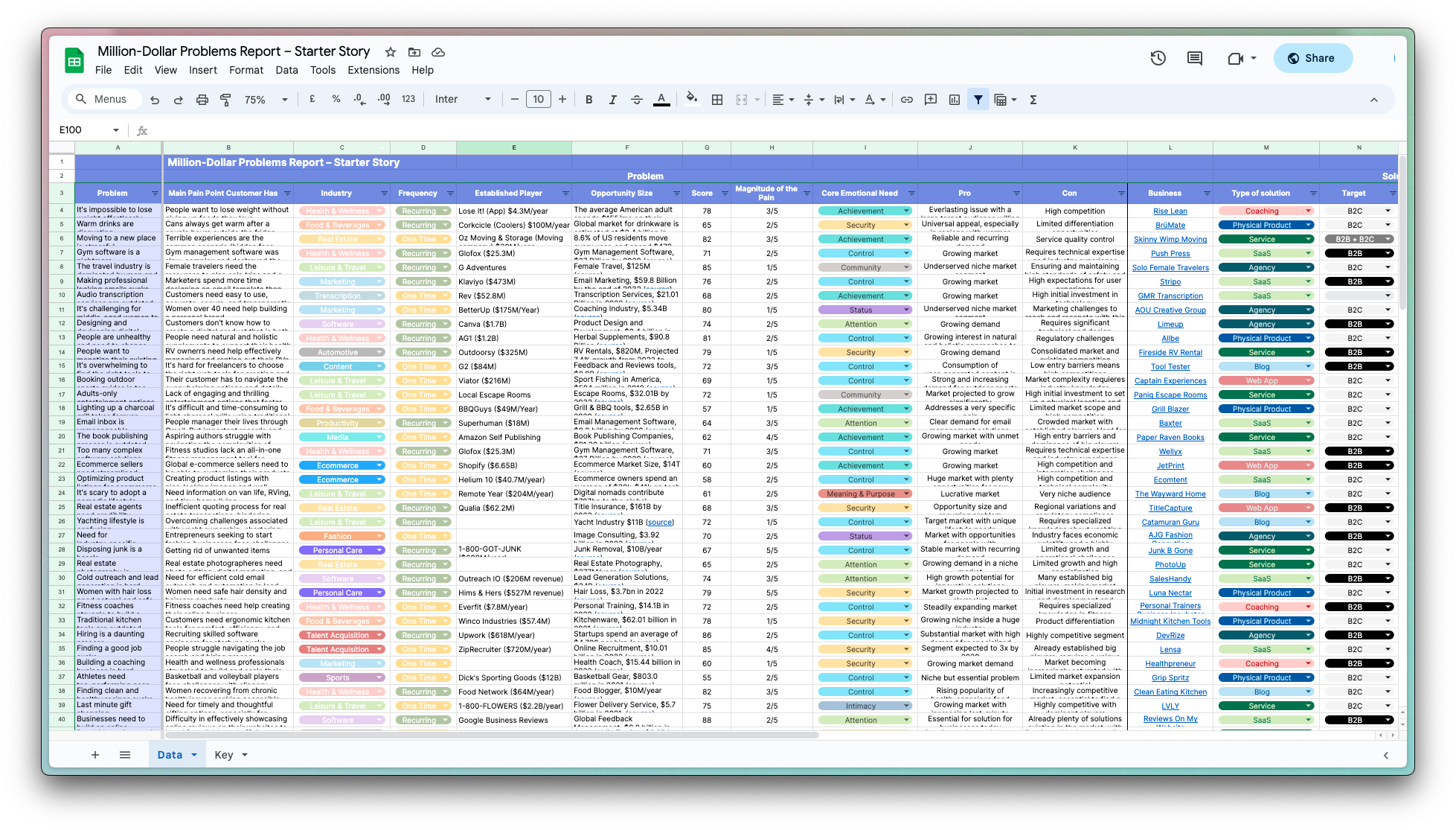|
|
Developers ↔️ Template Providers
|
$40K
monthly
|
—
days
|
$0.20
per visitor
|
$-1
to start
|
50
out of 100
|
|
|
|
|
|
|
Companies ↔️ Vetted Engineers
|
$85K
monthly
|
—
days
|
—
per visitor
|
$498
to start
|
74
out of 100
|
|
|
|
|
|
|
Businesses ↔️ Part-time Professionals
|
$1M
monthly
|
—
days
|
—
per visitor
|
$5K
to start
|
72
out of 100
|
|
|
|
|
|
|
EU e-Commerce Sellers ↔️ Expansion Agencies
|
$150K
monthly
|
180
days
|
$36.59
per visitor
|
$70K
to start
|
50
out of 100
|
|
|
|
|
|
|
Entrepreneurs ↔️ Software Providers
|
$8.5K
monthly
|
40
days
|
—
per visitor
|
$5K
to start
|
92
out of 100
|
|
|
|
|
|
|
Consumers ↔️ Personal Stylists
|
$223K
monthly
|
—
days
|
—
per visitor
|
—
to start
|
42
out of 100
|
|
|
|
|
|
|
Gamers ↔️ Game Developers
|
$85K
monthly
|
180
days
|
—
per visitor
|
$50K
to start
|
67
out of 100
|
|
|
|
|
|
|
Gift Buyers ↔️ Leather Artisans
|
$100K
monthly
|
40
days
|
—
per visitor
|
$70K
to start
|
50
out of 100
|
|
|
|
|
|
|
Brands ↔️ eCommerce Agencies
|
$150K
monthly
|
90
days
|
—
per visitor
|
$1K
to start
|
90
out of 100
|
|
|
|
|
|
|
Independent Artists ↔️ Media Buyers
|
$175K
monthly
|
7
days
|
$35.00
per visitor
|
$20
to start
|
90
out of 100
|
|
|
|
|
|
|
Gaming Brands ↔️ Micro-streamers
|
$15K
monthly
|
—
days
|
—
per visitor
|
—
to start
|
67
out of 100
|
|
|
|
|
|
|
eCommerce Sellers ↔️ Print Providers
|
$700K
monthly
|
30
days
|
—
per visitor
|
$750K
to start
|
58
out of 100
|
|
|
|
|
|
|
Homeowners ↔️ AV/Home Solution Providers
|
$4.17M
monthly
|
90
days
|
$8.47
per visitor
|
$15K
to start
|
66
out of 100
|
|
|
|
|
|
|
Fashion/Furniture Buyers ↔️ Resellers
|
$4K
monthly
|
1
days
|
—
per visitor
|
$0
to start
|
90
out of 100
|
|
|
|
|
|
|
Consumers ↔️ Audio Equipment Distributors
|
$1M
monthly
|
365
days
|
—
per visitor
|
$1.5K
to start
|
72
out of 100
|
|
|
|
|
|
|
Companies ↔️ Remote Tech Talent
|
$300K
monthly
|
14
days
|
—
per visitor
|
$500
to start
|
90
out of 100
|
|
|
|
|
|
|
Restaurants ↔️ Job Seekers
|
$90.8K
monthly
|
360
days
|
$2.27
per visitor
|
$30K
to start
|
46
out of 100
|
|
|
|
|
|
|
Business Owners ↔️ Virtual Assistants
|
$2.47M
monthly
|
60
days
|
—
per visitor
|
$900
to start
|
64
out of 100
|
|
|
|
|
|
|
Digital Fashion Wardrobe ↔️ Buyers
|
$12.5K
monthly
|
30
days
|
—
per visitor
|
$200K
to start
|
59
out of 100
|
|
|
|
|
|
|
Employers ↔️ Filipino Professionals
|
$1.5K
monthly
|
50
days
|
—
per visitor
|
$1K
to start
|
84
out of 100
|
|
|
|
|
|
|
|
$1.5M
monthly
|
365
days
|
$0.25
per visitor
|
$350K
to start
|
50
out of 100
|
|
|
|
|
|
|
Outdoor Sports Enthusiasts ↔️ Sports Guides
|
$100K
monthly
|
—
days
|
—
per visitor
|
—
to start
|
54
out of 100
|
|
|
|
|
|
|
Individuals ↔️ Financial Advisors
|
$30K
monthly
|
180
days
|
$0.75
per visitor
|
$100K
to start
|
76
out of 100
|
|
|
|
|
|
|
Sneaker Buyers ↔️ Sneaker Sellers
|
$1K
monthly
|
337
days
|
—
per visitor
|
$5K
to start
|
71
out of 100
|
|
|
|
|
























